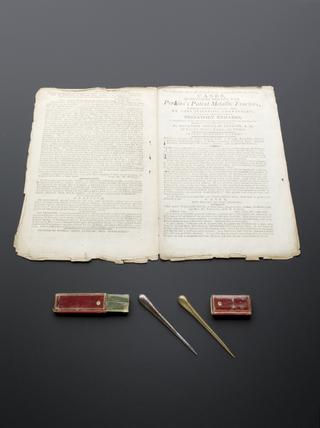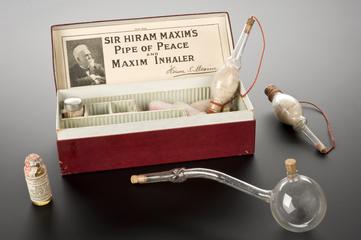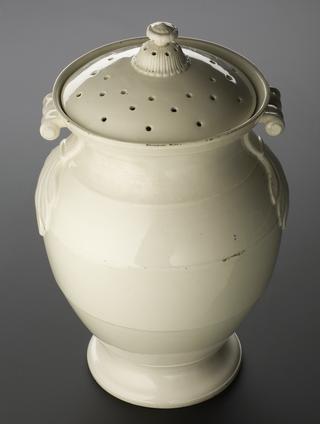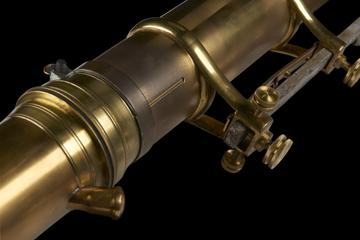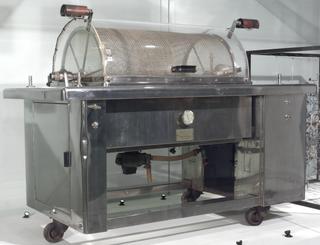




Three brass automatic lancets, in leather covered case, 18th or 19th century, one lancet is lacking its top lever, registered as German
These lancets are unusual as they appear in a set of three and are decorated with an engraved quill design. Lancets were used in bloodletting – a practice once carried out to treat a wide range of diseases and medical conditions. This automatic type of lancet works by the blade being swiftly released to cut into a vein by means of a spring mechanism. Much depended on the skill and experience of the operator in determining the depth of the cut.
The main body of the lancet is made of brass, but the double-sided blade is made of a stronger, finer metal. It is likely that it would have been used on a number of patients without any effective form of sterilisation.
Details
- Category:
- Therapeutics
- Collection:
- Sir Henry Wellcome's Museum Collection
- Object Number:
- A606792
- Measurements:
-
overall: 21 mm x 97 mm x 78 mm, .14kg
lancet: 13 mm x 58 mm x 33 mm, .02kg
- type:
- automatic lancet
